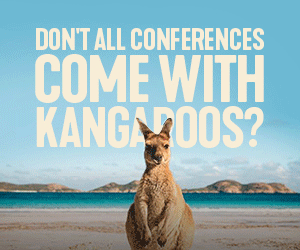From the Challenges of the Pandemic Comes a New Wave of Innovation

Since the pandemic started in March of 2020, everyone in the association, travel, meetings and hospitality sectors has been challenged in ways that none of us could have imagined. In addition to the need to regroup, retool and rethink about virtually every aspect of our businesses or organisations, we’ve had to do it in an incredibly short period of time. Some of us are still in the throes of trying to deal with the impact of COVID-19, some have, unfortunately, lost the battle already - others are just trying to outlast it.
Yet, there some who have already decided that this crisis has created a permanent change in the way their organisation must operate if it is to not only regain its pre-virus position but to exceed it. These are the organisations who have committed to new, innovative ways of doing things and these are the organisations that will thrive in the post-virus world.
Just look at the activities of a typical membership-based organisation that have been (or threaten to be) drastically changed in 2020.
- meetings member retention
- member engagement trade shows educational offerings
- human resources (layoffs, remote workers, productivity, etc)
These are just the operational aspects of the organisation itself. It doesn’t even begin to consider the impact on the industries, professions and communities served by the Association. In this environment, innovation and the advanced use of technology are the tools by which organisations can emerge as leaders going forward.
Here are some things that are already starting to create a picture of our future world and what organisations need to do to take advantage of these trends.
‘Zoom’ is not the answer, but it is a tool for getting to the next level.
That is not meant to be an advertisement for the Zoom online meeting platform. In the USA, it has become the most widely used video conferencing format by far. It is so popular that many are already complaining of ‘Zoom fatigue’ because there are still very few in-person meetings or events being held at the levels they were before the COVID-19 crisis. Regardless of which technology is used for these virtual meetings and conferences, the implications for the future have become clearer.
- They have probably saved a lot of organisations from being in even worse shape than they would have been in were it not for this option. Face-to-face (if not actually in-person) is still better than telephone conference calls for communications, engagement, networking and presentations.
- People (members, exhibitors, vendors, salespeople, etc.) are getting used to doing business and/or participating this way. Some form of virtual interaction is going to be expected as an option for many activities from now on.
- All organisations must commit time and resources to training their staffs and key leaders to be effective virtual communicators.
- Since these virtual activities have become so commonplace, the only way to differentiate yourself in this area is through quality control. Be the best, easiest, and most enjoyable presenter of virtual content in your field.
Outcomes vs processes, experiences vs events
One of our biggest fears is that members, customers, exhibitors and other stakeholders will get so used to doing things virtually that we will see a big drop-off in attendance in meetings and conferences after the pandemic subsides. This may well be the case, but to minimise the impact, use technology and innovation to enhance your value proposition to members and attendees.
- Upgrade your content through technology. There may be ways to use a virtual option to attract a higher level of technical speaker, public official, or celebrity to participate in your event due to no travel, etc.
- Increase networking through innovation. One of the things people miss the most right now is the ability to make new friends, acquaintances and business contacts in-person. The old-fashioned receptions and physical contact such as handshaking may be absent for quite a while. Help attendees find new ways to greet each other, to create ‘meetup’ types of gatherings within your event and to be able to interact with the organisation’s leadership.
- Combine the traditional with the innovative. Experiment with combinations of in-person and virtual formats for educational programs, social events, members-only activities and trade shows. Ask your partners (exhibitors, associate members, host venues, etc.) to work with you to increase the impact of the attendee experience.
Innovation and technology don’t just give us the opportunity to do different things and to do things differently. They also give us the opportunity to do things better. In the post-COVID-19 world, that may well be your biggest competitive advantage.
.jpg) Mark Levin has three decades of experience as an association executive and is also an internationally known speaker and consultant to the nonprofit and association community. He currently serves as executive vice president of the Chain Link Fence Manufacturers Institute, an international trade association, and as president of B.A.I., Inc., his speaking and consulting firm.
Mark Levin has three decades of experience as an association executive and is also an internationally known speaker and consultant to the nonprofit and association community. He currently serves as executive vice president of the Chain Link Fence Manufacturers Institute, an international trade association, and as president of B.A.I., Inc., his speaking and consulting firm.
He can be reached at mlevin0986@gmail.com or via his website at www.baileadership.com
Other Articles
About Us
Supported by the Union of International Associations (UIA), the International Association of Professional Congress Organisers (IAPCO) and the Interel Group, the global public affairs and association management consultancy, Headquarters Magazines serve the needs of international associations organising worldwide congresses.















